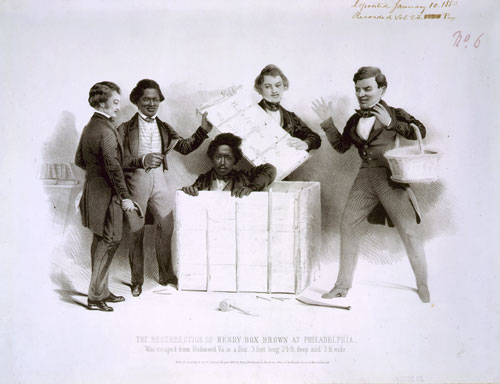Introducing The Disappearing Man, based on an incredible true tale
 A sudden bang, and Henry flattened his back against the wooden wall of a small, lopsided building. He made out the ghostly image of a door slamming shut in the breeze, then slowly squeaking open on its hinges, only to be slammed again.
A sudden bang, and Henry flattened his back against the wooden wall of a small, lopsided building. He made out the ghostly image of a door slamming shut in the breeze, then slowly squeaking open on its hinges, only to be slammed again.
Henry was in a hurry, but he made himself go good and slow, so he could avoid any obstacles or confrontations. Yet when Henry reached the end of an alley that spilled out onto Broad Street, someone grabbed his shirt and yanked him backwards.
“It’s a colored!” the man shouted.
Henry didn’t dare turn and show his face. Panic seized him just as fiercely as the hand on his shirt, and he tore loose, his shirt ripping as he took off. He was now flying, sprinting across Broad Street. A flash of lightning gave him away, followed by deafening thunder.
“Shoot him!” hollered a second man. Then a gunshot.
It is one of the most amazing escapes in American history.
My wife stands only 4 feet, 11 inches high, and even she found the box extremely cramped and uncomfortable. Imagine what it would have been like for Henry Brown, who stood 5 feet, 8 inches and weighed 200 pounds.
The Freedom Center visit sparked my imagination, and I have spent the last three years studying Henry Brown’s story and trying to find a way to bring his story to light. The result, at last, is The Disappearing Man, which rolled off the presses this month. It’s the first novel to tackle Henry Brown’s remarkable story.
In his 1849 narrative, Henry said that God planted a thought in his head: “Go and get a box, and put yourself in it.” So he did just that. With the help of Samuel Smith, a white shoemaker and gambler, and James Smith, a free black and Henry’s closest friend, he underwent a 27-hour ordeal inside the box. The box was transported by wagon, train, and steamboat, and along the way Henry was flipped upside down for long, agonizing stretches and was dropped on his head.
His story is remarkable, but what I found even more amazing was that few people have heard of him. In the three years since I visited the Cincinnati museum, I have met only two people who were familiar with his escape. Most people had no idea who Henry Brown was, and only a few people had a vague recollection of hearing something about his bizarre escape.
That is why I decided to tell Henry Brown’s account. I wanted to resurrect his story from history, just as he was resurrected from his box after being buried in darkness for an entire day.
Like any piece of historical fiction, I had to fill in the blanks, relying on a blend of history, speculation, and imagination. But his true story is there–his childhood, his relationship to his wife Nancy, and his Great Escape.
By Doug Peterson
